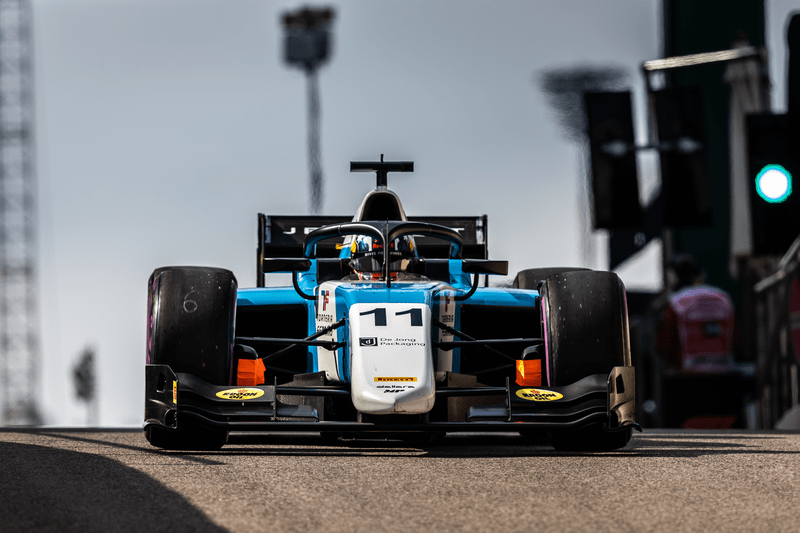The Dallara F2/18 used in the FIA Formula 2 Championship is currently heading into it’s fifth straight season in use for the single-seater championship after it was first commissioned in 2018 for that year’s F2 championship.
As a completely spec racing car, it was designed by Luca Pignacca and manufactured by the Italian outfit Dallara who also make the F3/19 which is used in the precursor to F2, the FIA Formula 3 Championship.
It has been in the hands of some of Formula 1’s brightest talents, including George Russell, Lando Norris, Mick Schumacher and more recently, Oscar Piastri.
The Car
Measuring in at just over five metres in length and just under two metres in width, the F2/18 is made from a number of different materials.
The main survival cell is made from a carbon/aluminium honeycomb structure with anti-intrusion panels that are made by Dallara. The front and rear wings are purely carbon-fibre with the rest of the bodywork being another honeycomb structure of kevlar and carbon. It also features a titanium halo over the monocoque as per the F1 specifications as well as the full 2017 FIA safety standards.

The drivers also have the full Drag Reduction System (DRS) at their disposal during the designated DRS zones during free practice and qualifying. Similar to F1, they will need to be within a second of the car in front to be given use of it.
The Engine
The F2/18 is powered by a 3.4 litre single turbocharged V6 which produces 620 HP at 8750 RPM. It was designed by the french mechanical firm Mecachrome and is built and maintained by their in-house engineers.
Each engine is rebuilt after 8000km and with the Sprint Race being 120km and the Feature Race 170km, the teams get quite a bit of use out of each engine.
The transmission is a 6-speed longitudinal sequential gearbox which is shifted with an electro-hydraulic command from the rear paddles on the steering wheel.
Performance Specs:
- 0 – 100km/h: 2.9s
- 0 – 200km/h: 6.6s
- Maximum Speed: 335km/h (with Monza aero configuration plus DRS)
- Maximum Torque: 570 NM at 6000 RPM
The Tyres
Originally, the F2/18 had thirteen-inch wheel rims which were carried over from the predecessor in 2017. The main tyre manufacturer, Pirelli, were also re-signed as the categories only tyre supplier from the 2018 season onwards.
For the 2020 season the FIA upped the size of the magnesium wheel rims to eighteen-inches to allow Pirelli to collect data on how the larger tyres would work ahead of the adoption into Formula 1 for the 2022 season.
The brakes used to slow these cars down are made of carbon-carbon brake discs and pads, with six pistons Brembo calipers – and they look amazing when they’re glowing like this:

The wheels are then attached to the body of the car by pushrod operated double steel wishbones with torsion bars suspension on the front of the car and spring suspension on the rear.
The ride height, camber, toe and anti-roll bar are all fully adjustable to each driver and teams preference.
The cost of a completed chassis from Dallara is €500,000 (£427,475 / $590,080) with the engine unit from Mecachrome costing an additional €67,000 (£57,275 / $79,071).



